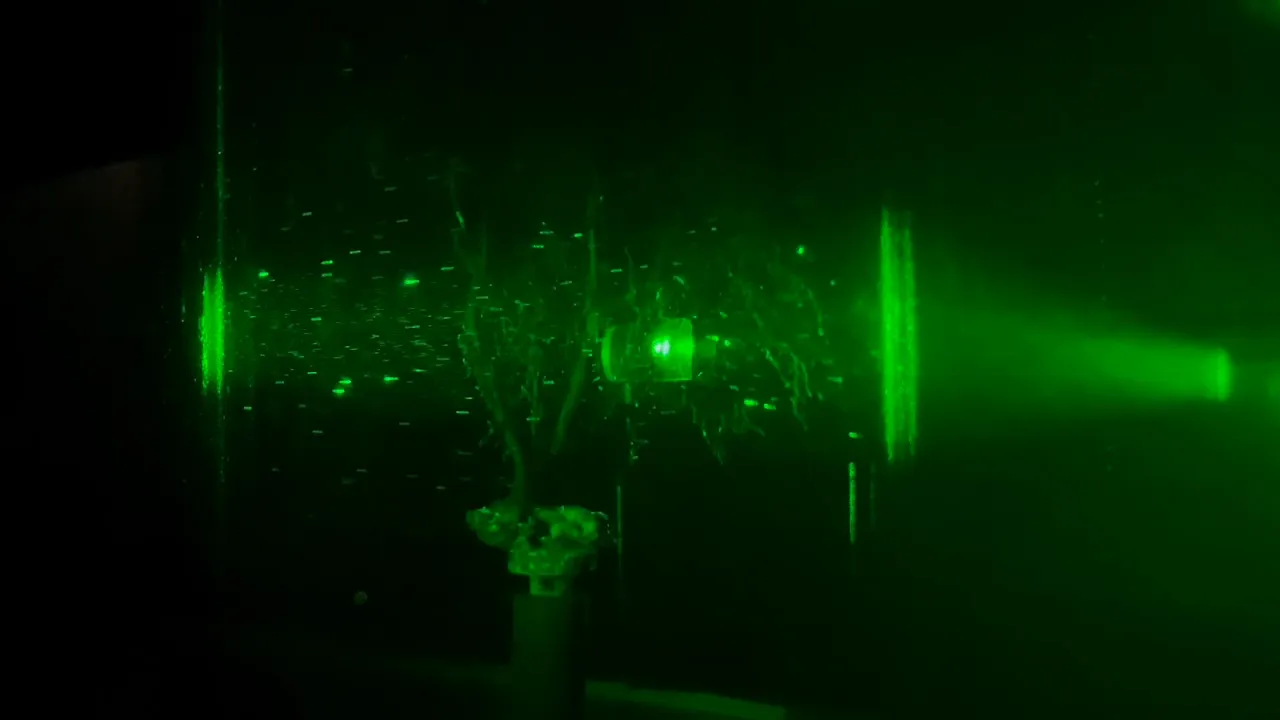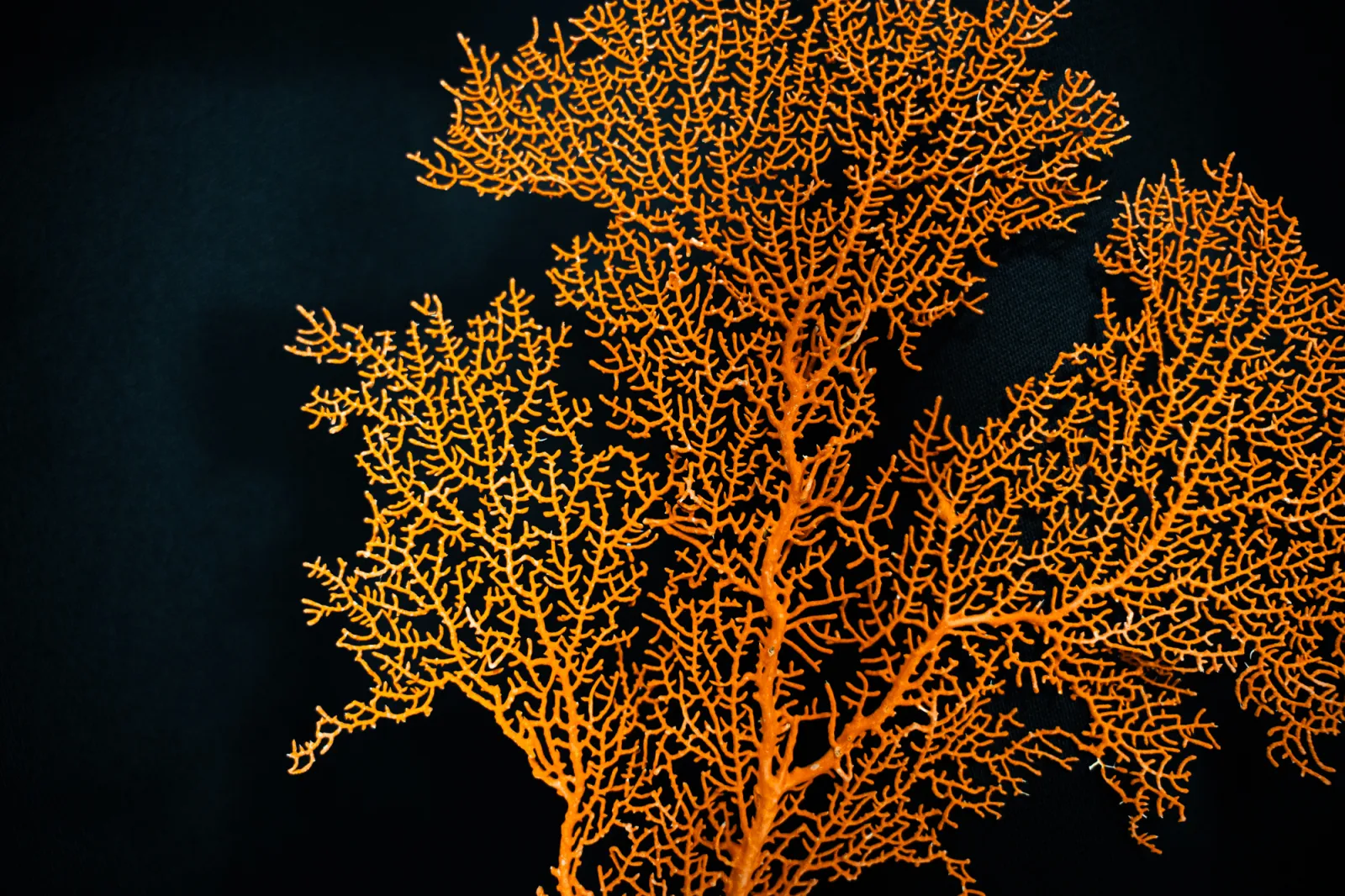GSAS: Going with the Flow
Assistant Professor of Physics Asja Radja’s research, including a new flow tank, could help solve the problem of coral reef bleaching.
You might not think of physics when you think of corals in the ocean. But Asja Radja, assistant professor of physics, studies the physics of biological systems to understand the mechanisms that form shapes and patterns in nature. She’s also a scuba diver, so it was only a matter of time before corals caught her attention.
“I thought they were beautiful,” Radja says. “They just had these stunning patterns.”
The corals she studies are not the kind we’re used to seeing in news stories about coral reef bleaching. Those are hard corals, which have been a focus of concern as stress—due in part to warming waters—causes the vibrant algae that grows on them to leave, “bleaching” or turning the corals white.
Radja and her student researchers—including Bryn Mawr undergraduates and a graduate student from Villanova—study soft corals called gorgonians. Unlike hard corals, these gorgonians are thriving.
“The gorgonian corals have been a lot more resistant to rising ocean temperatures,” says physics major Elinor Rivera ’25. “But soft corals are a lot less researched than hard corals are.”
Radja’s lab studies how the patterns of gorgonians optimize the ability for the organisms that live on them, called polyps, to catch food and survive.
“The coral gets energy from both the polyps eating and the symbiotic algae sharing the products of photosynthesis with the coral in exchange for shelter,” Radja explains. “If the symbiotic algae leave the coral, then the coral subsequently often dies.”
A polyp is an individual animal, not much more than a mouth ringed in tentacles, that catches passing zooplankton and organic debris. Each polyp is genetically identical to the others that form on a coral’s branches, and the polyps are linked by a common gut system that allows the colony to share nutrients.
“A lot of the hypotheses we’re investigating have to do with their feeding mechanisms,” Rivera says. “There might be something about the morphology and physical structure of the gorgonian corals that makes them better suited to catching marine snow and little things in the ocean that they can eat.”
“The gorgonian corals have been a lot more resistant to rising ocean temperatures. But soft corals are a lot less researched than hard corals are.”
In 2024, Radja’s lab completed building a flow tank, a 200-gallon tank of circulating water that allows her and her student researchers to observe and film the corals within a flow of water, to better understand how food particles might be captured in the wild. They observed that the flow slowed and circulated around the coral branches, creating whirls of water that optimized the opportunity for food to reach the polyps.
“It was really cool; we have little tracer beads, and we could see turbulence occurring around the coral,” Rivera says.
Initial findings suggest that one reason the corals have the structure they do is to slow the flow of the water and capture food particles between the branches “so that these polyps can sit there with their mouths wide open, happily waiting,” Radja says.
The research is preliminary, and while there are a few biologists—and one mathematician—also researching gorgonians, Radja is the only researcher she knows of studying corals through physics.
“If we can figure out why these soft corals are doing well, maybe we can inform repopulation efforts in bleaching reefs to focus on soft corals,” Radja says. “Overall, this work will inform artificial reef designs that focus on resilient morphologies rather than individual species and will expand the toolkit for climate reef restoration.”
Published on: 06/06/2025


